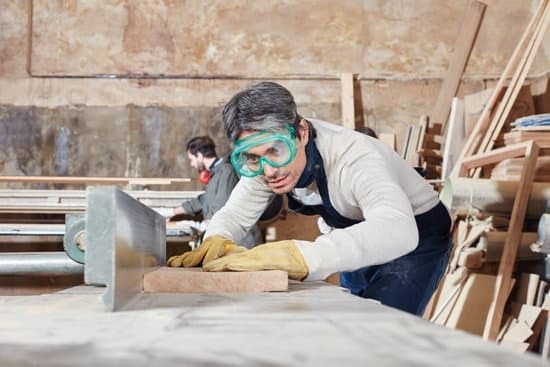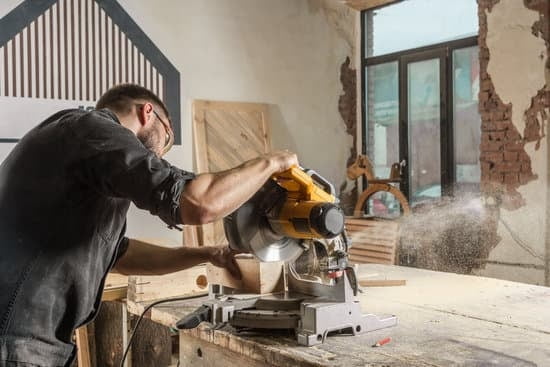Woodworking dado cuts are an essential technique in woodworking that involves cutting a channel across the grain of a wood piece. This section will provide an overview of what dado cuts are, their significance in woodworking, and common applications for this cutting method. Understanding the fundamentals of dado cuts is crucial for any woodworker looking to enhance their joinery skills and create strong, secure connections in their projects.
A dado cut is a groove or trench cut into a piece of wood, typically running perpendicular to the grain. This type of cut is vital in creating joints and securing shelves, dividers, and other structural components in woodworking projects. From constructing cabinets to building bookshelves, dado cuts play a pivotal role in ensuring stability and durability in furniture and other wooden creations.
In addition to its structural importance, dado cuts are commonly used for various woodworking applications. Whether it’s for creating slots to hold shelves or dividers in a cabinet, or crafting unique joinery patterns for decorative elements, mastering the art of making precise dado cuts opens up a world of possibilities for woodworkers.
In the following sections, we’ll delve into different types of dado cuts, tools needed for the job, step-by-step guides, tips for achieving perfect results, and common mistakes to avoid when working with these intricate yet valuable woodworking techniques.
Types of Dado Cuts
When it comes to woodworking, a dado cut is an essential technique for creating strong and secure joints. There are several types of dado cuts that woodworkers use depending on the specific requirements of their project. Understanding the differences between these types of cuts can help in achieving the desired results.
The through dado cut is perhaps the most common type and involves cutting a groove across the grain of the wood that goes all the way through the piece. This type of cut is often used for making bookshelves, cabinets, and other furniture pieces that require shelves to fit into a frame.
On the other hand, a stopped dado cut is similar to a through dado but does not extend all the way through the workpiece. This type is commonly used when visible ends are undesirable or where extra reinforcement at a joint is needed.
A rabbet-dado cut combines both rabbet and dado techniques by cutting one edge along the length of the board and another across its width. This type of joint can be found in drawer construction or cabinet making. Lastly, a groove-dado refers to cutting a groove with length and precision, usually parallel to the length or face of a workpiece as needed for joinery or decorative purposes.
Understanding these different types of cuts allows woodworkers to select the best approach for their specific woodworking projects, ensuring sturdy and professional-looking results.
| Type of Dado Cut | Common Applications |
|---|---|
| Through Dado | Bookshelves, cabinets |
| Stopped Dado | Furniture joints, hidden grooves |
| Rabbet-Dado | Drawer construction, cabinet making |
| Groove-Dado | Joinery, decorative edges |
Tools and Materials Needed for Dado Cuts
Table Saw
To make dado cuts, you will need a reliable table saw. A table saw is essential for making straight and accurate cuts in the wood to create the dado joint. It is important to ensure that the table saw is properly set up and the blade is aligned before making any dado cuts.
Dado Blade Set
A dado blade set is specifically designed for making dado cuts. This set includes multiple blades which can be stacked together to achieve the desired width of the dado cut. It is important to select the appropriate width of blades and adjust them properly for the specific woodworking project.
Router
In addition to a table saw, a router can also be used for making dado cuts, especially for stopped dados and other complex joints. Routers provide precision and control in creating dado cuts, particularly in hardwood or thicker materials where a table saw may not be suitable.
Chisels, Clamps, and Safety Equipment
Other tools and materials needed for dado cutting include chisels for cleaning and fine-tuning the edges of the dado cut, clamps for securing the wood during cutting, and safety equipment such as goggles, gloves, and hearing protection. It is crucial to use these safety measures to prevent injuries while working with woodworking tools.
By having these tools and materials ready, you can begin your woodworking project that requires dado cuts with confidence and precision. These are essential items that will help ensure that your project turns out just as you’ve envisioned it-strong, durable, and beautiful.
Happy Woodworking.
Step-by-Step Guide to Making a Dado Cut
Making a dado cut in woodworking requires precision and attention to detail to ensure a snug fit for the joint. Follow this step-by-step guide to master the art of making dado cuts in your woodworking projects.
Marking the Wood
Before making a dado cut, it’s important to mark the wood accurately. Use a marking gauge or a combination square to mark the width and depth of the dado on the piece of wood. Proper marking ensures that the cut is made at the correct location and dimensions.
Setting Up the Tools
Depending on the type of dado cut required for your project, set up your tools accordingly. For example, if you’re using a table saw with a dado blade set, adjust the blade to the desired width and height. Ensure that all measurements are precise and double-check before making any cuts.
Making the Cut
With the wood properly marked and tools set up, carefully make the dado cut following your markings. If using a table saw, slowly feed the wood through, keeping a firm grip on it and ensuring that it stays flat against the saw’s surface. Make sure to use push sticks or featherboards as needed for safety.
Testing the Fit
After making the cut, test the fit by placing the mating piece of wood into the dado joint. The fit should be snug but not too tight. If adjustments are needed, use chisels or other appropriate tools to fine-tune the fit for a perfect joint.
Fine-Tuning the Dado Cut
Once you’ve achieved a satisfying fit, it’s time to fine-tune any rough edges or imperfections in the dado cut. Use sandpaper or hand planes to smooth out any uneven areas and ensure that both pieces of wood fit together seamlessly.
By following these steps with precision and care, you can achieve perfectly fitting dado joints in your woodworking projects every time.
Tips and Techniques for Perfect Dado Cuts
Making perfect dado cuts in woodworking requires careful attention to detail and the use of specific techniques and tools. One of the key factors in achieving precise dado cuts is choosing the right saw blade. A quality dado blade set, designed specifically for making dado cuts, can greatly improve the accuracy and cleanliness of the cut. The width and sharpness of the blades are crucial in creating a clean and smooth dado cut.
In addition to selecting the appropriate saw blade, adjusting the dado set for different depths is essential for achieving perfect dado cuts. By adjusting the height and width of the blades within the dado set, woodworkers can customize the size and depth of their dado cuts to fit their specific project needs. This level of customization ensures that each joint fits perfectly together, resulting in strong and seamless connections in woodworking projects.
Using jigs and guides can also significantly improve the precision of dado cuts. By utilizing these accessories, woodworkers can maintain consistent measurements and angles throughout their dado cutting process, ultimately leading to more accurate results. These tools not only help with alignment but also contribute to overall safety by providing additional support and stability during cutting.
It’s important for woodworkers to maintain precision and consistency in their dado cuts to ensure that they achieve professional-quality results. Taking care to choose the right saw blade, adjust the dado set properly, and utilize jigs and guides can make all the difference in creating perfect-fitting dado joints for a variety of woodworking projects.
| Tips | Techniques |
|---|---|
| Choosing the right saw blade | Adjusting the dado set for different depths |
| Using jigs and guides for accuracy | Maintaining precision and consistency in dado cuts |
Common Mistakes to Avoid in Dado Cutting
When it comes to woodworking, mastering the art of dado cuts is essential for creating strong and secure joints in various woodworking projects. However, there are common mistakes that beginners and even experienced woodworkers can make when performing dado cuts. By being aware of these mistakes, you can avoid costly errors and achieve precise and professional results in your woodworking projects.
Here are some common mistakes to avoid when making dado cuts:
- Using the wrong type of wood: Not all woods are suitable for dado cuts, especially those with a tendency to splinter or chip easily. It’s essential to choose a hardwood or plywood with a smooth and solid grain to ensure clean and precise dado cuts.
- Incorrect measurements and markings: Accurate measurements and markings are crucial for successful dado cuts. Even a small miscalculation can lead to ill-fitting joints and compromised structural integrity in your woodworking project. Take your time to double-check your measurements before making any cuts.
- Rushing the process and compromising safety: Woodworking requires patience and precision. Rushing through the process of making dado cuts can lead to accidents, injuries, or damaged workpieces. Always prioritize safety and take the necessary precautions when operating power tools.
- Not testing the fit before finalizing the cut: Before committing to a dado cut, it’s vital to test the fit of your joinery. This step allows you to make any adjustments necessary for a snug and seamless joint. Taking the time to test the fit will save you from potential rework or wasted materials.
By avoiding these common mistakes in dado cutting, you can elevate the quality of your woodworking projects and achieve professional-looking results with strong and durable joints. Remember that practice makes perfect, so take your time to hone your skills in making precise dado cuts for all your woodworking endeavors.
Dado Cut Inspiration
Woodworking projects often require the use of dado cuts to create strong and durable joints. One popular project idea that showcases the versatility of dado cuts is building bookshelves with dado joinery. By using dado cuts to create slots in the shelf supports and shelves, you can easily assemble a sturdy and stable bookshelf. This method provides a clean and seamless look, as the joints are hidden from view once the shelves are in place.
Another inspiring project idea that utilizes dado cuts is constructing drawers with dado cuts for sturdy joints. Dado cuts can be used to create grooves in drawer sides, allowing for a snug fit with the drawer bottom. This creates a solid and reliable joint that can withstand the weight of items placed inside the drawer. The use of dado cuts in drawer construction also adds a professional touch to the finished piece.
For those looking to take their woodworking skills to the next level, creating custom cabinets with dado cut construction is an excellent project idea. Whether it’s creating frameless cabinets or traditional face-frame cabinets, incorporating dado cuts into the construction process can result in high-quality, long-lasting cabinetry. Dado joinery allows for precise assembly and ensures that the cabinet components fit together seamlessly.
- Building bookshelves with dado joinery
- Constructing drawers with dado cuts for sturdy joints
- Creating custom cabinets with dado cut construction
Conclusion
In conclusion, mastering the art of dado cuts in woodworking is a valuable skill that can elevate the quality and durability of your projects. Dado cuts provide strong and secure joints that are essential for furniture, shelving, and cabinetry. By understanding the types of dado cuts and the tools needed for this technique, woodworkers can achieve precision and consistency in their work.
It is important to emphasize the significance of practicing and perfecting dado cutting skills. Whether it’s through building bookshelves with dado joinery or constructing drawers with dado cuts, there are ample opportunities to hone this technique. By paying attention to details such as choosing the right saw blade, adjusting the dado set for different depths, and using jigs and guides for accuracy, woodworkers can achieve perfect dado cuts with ease.
For those looking to further their knowledge and skills in woodworking dado cuts, there are plenty of resources available for learning and improvement. Whether it’s through online tutorials, woodworking classes, or books on joinery techniques, woodworkers can continue to refine their craftsmanship. With dedication and patience, mastering dado cuts will undoubtedly enhance your woodworking projects for years to come.
Frequently Asked Questions
What Is the Best Way to Make a Dado Cut?
The best way to make a dado cut is by using a table saw with a dado blade or a router with a straight bit and edge guide. Both methods require careful measurement and precision to create a snug-fitting dado joint.
What Is the Difference Between a Dado and a Rabbet?
The main difference between a dado and a rabbet is the orientation of the cut. A dado is cut across the grain of the wood, creating a slot, while a rabbet is cut along the edge of the wood to create a step or recess.
What Tool Do You Use to Cut a Dado?
To cut a dado, you can use various tools such as a table saw with a dado blade, a circular saw with a guide, or even a router with an edge guide. The choice of tool depends on the thickness and length of the dado needed, as well as personal preference and expertise.

Hi everyone! I’m a woodworker and blogger, and this is my woodworking blog. In my blog, I share tips and tricks for woodworkers of all skill levels, as well as project ideas that you can try yourself.





